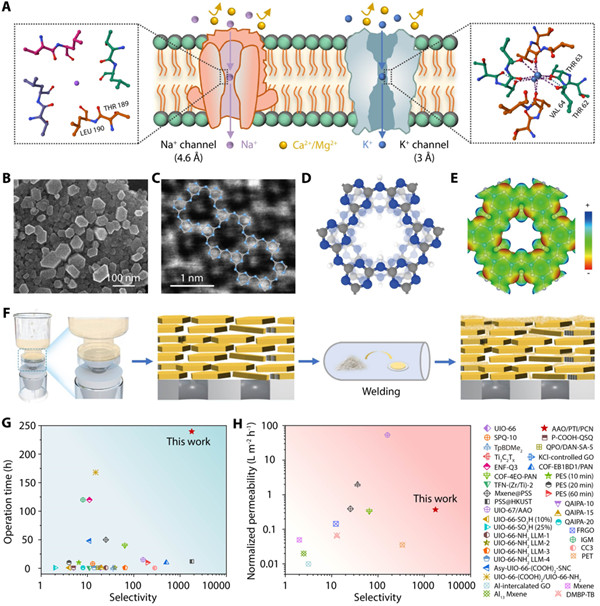New Carbon Nitride Membrane Revolutionizes Lithium Extraction from Salt Lakes
In a major breakthrough for lithium recovery technologies, researchers from the Qingdao Institute of Bioenergy and Bioprocess Technology (QIBEBT) of the Chinese Academy of Sciences, together with collaborators, have developed a crystalline carbon nitride membrane that could transform the lithium extraction industry.
The innovative design, which mimics biological ion channels, shows remarkable efficiency and durability in separating lithium ions from magnesium ions in salt-lake brine.
The study, published in Science Advances on June 14, introduces a “congener-welded” crystalline carbon nitride membrane with bio-inspired enhancements that significantly outperforms traditional polymer membranes. This innovative membrane achieves an impressive selectivity ratio of 1,708 for the extraction of highly dilute lithium ions (0.002 M) from concentrated magnesium ions (1.0 M), which is crucial for addressing the prevalent high magnesium content in various lithium sources.
The design of the membrane is inspired by nature’s own highly selective biological ion channels, which efficiently discriminate between different ions. “Our approach was to mimic these natural systems, creating a membrane with both high selectivity and enhanced stability, which are critical for practical applications,” said ZHANG Yuanyuan, co-first author of the study from QIBEBT.
The exceptional performance of the membrane is due to its unique structure, which combines crystalline and amorphous forms of polymer carbon nitride. This structure not only provides the necessary pore uniformity and narrowness to exclude larger hydrated magnesium ions, but also facilitates smooth lithium-ion transport, similar to the barrier-free ion transport seen in natural ion channels.
“The dual functionality of our membrane opens up new possibilities for its use beyond lithium extraction,” said Prof. GAO Jun, co-corresponding author of this study from QIBEBT. “These properties could make a significant contribution to environmental protection efforts, in addition to improving the efficiency of resource recovery.”
This advancement comes at a crucial time, as the demand for lithium continues to grow, driven largely by the electric vehicle market and the renewable energy sector. Efficient and sustainable extraction methods are essential to meeting this demand and reducing the environmental impact of lithium mining.
“The advances achieved through this membrane technology offer new possibilities for efficient extraction of lithium, a crucial element in the transition to renewable energy and electric mobility,” said Prof. LIU Jian, co-corresponding author of the study from QIBEBT.

(Text by LIU Jian)
Contact:
KONG Fengru
Qingdao Institute of Bioenergy and Bioprocess Technology, Chinese Academy of Sciences
Tel: 86-532-58261072
E-mail: kongfr@qibebt.ac.cn